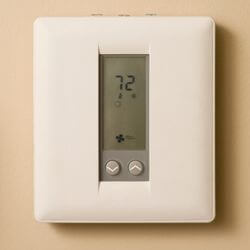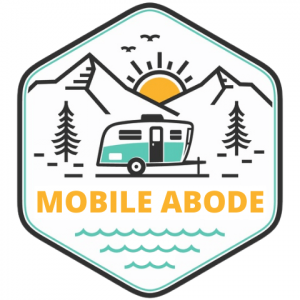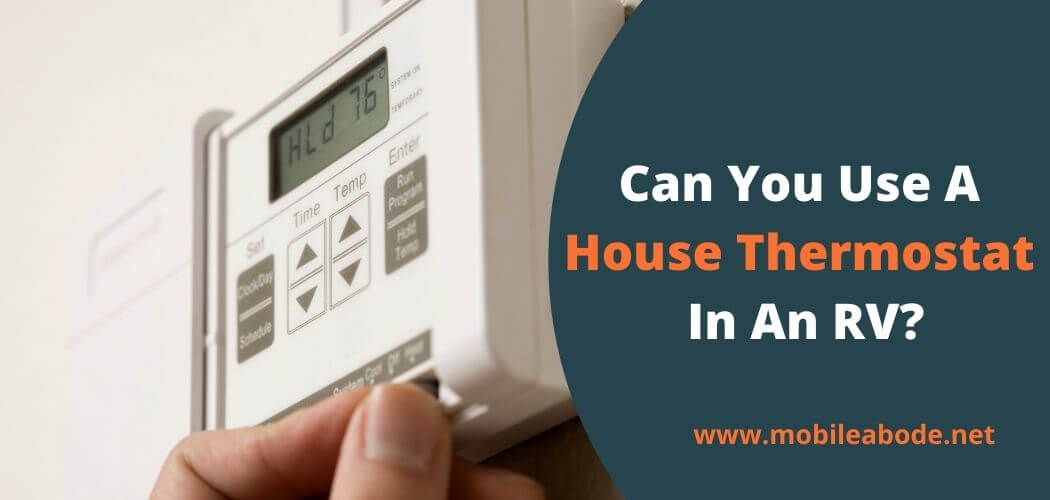No, you cannot. The reason is that house thermostats (the ones in your home) and RV thermostats or marine thermostats (the ones in the RVs and boats) work off of different principles.
House thermostats use a bimetallic strip while an RV/marine one uses a wax-filled capsule which expands to open up contacts when the temperature rises above 37C (98.6 F).
House Thermostat vs RV Thermostat: How Do They Work?
A “House” thermostat works differently than your average household thermostat, but not because it’s electrically different.
A digital thermometer is pretty similar no matter what type of refrigeration unit it controls. House thermostats control the temperature of a freezer or refrigerator by using a wax-filled capsule that expands as the temperature rises.
When it’s cold outside, the wax is stiff and doesn’t expand very much, so it keeps a tight contact between two terminals, closing an electrical circuit.
When the weather gets warm, however, the wax starts to melt and flow, expanding along with it. This pushes against a piston that separates those two terminals enough that they no longer conduct electricity.
No current means no cooling unit! In other words: no more chilly drinks (or frozen dinners).
House vs. RV Thermostats: Getting The Temperature Just Right
The closer you are to 37 degrees C, the lower the amp draw will be from your power source. If you let it rise too high, it will increase the amp draw thus shortening battery life significantly.
Some people feel it’s better to err on the side of caution and keep it as low as possible.
Also Read: Do RV Batteries Charge When Plugged Into Shore Power?
FAQs about RV Thermostat
How do you change a thermostat on a camper?
The thermostat on your camper is easily accessible. It’s usually located in the cabinet next to where your stove is, but it can be elsewhere depending on the layout of your camper.

To gain access to it you just need to open up that cupboard and you will see everything in there.
The thermostat should be directly in front of you with the wires running off to the left or right (depending on where in the cupboard it is).
Remove all of these wires by unscrewing them; remove the old thermostat and replace it with a new one.
Make sure when you’re screwing back onto a place that they are tight enough for water not able to get into the unit when it gets washed out.
How do you fix a broken thermostat?
Most of the time if your thermostat is not working it will be one of the connections that have come loose.
However, there are times when it can be more complicated than that and require replacement.
If your connection(s) look fine then reattach them with a screwdriver; make sure they’re tight enough to keep water out but not so tight that you break any components in the unit itself because this could ruin it altogether.
After you have done this check to see if it’s working by plugging the unit back in, turning up your heat/air conditioning, and seeing if anything happens inside. If nothing changes chances are you will need to replace the whole unit.
Will a 24v thermostat work on 12V?
A 12-volt thermostat works on a 12-volt system.
A 24-volt thermostat is for use in school buses with 24 volts, not RVs or camping trailers which have 12 volts.
The reason is that the voltages are different so you must stick to your unit’s voltage otherwise it may cause damage when the wrong device is used.
How do you replace an RV Thermostat?
- First, shut down all electrical power into the area where the heater/air conditioner is located in this will be easier to work without fear of being shocked.
- If there are screws holding on one side of this cover go ahead and remove them but leave them nearby because these may be needed when putting the new cover in place.
- If not, tape a note with a small arrow to ensure you put it back on in the correct direction.
- Once the cover is off then ease out the wire terminals or what If there are screws remove them or tape a note with an arrow directing their proper installation when putting everything back together again.
- Take care during this process because any damages that have been done may lead to needing to buy a replacement unit so take your time and be careful when removing anything from this area of your camper.
- Once you have removed all of these items find your old broken thermostat and pull it out, which will reveal where all wires for this particular device connect.
- Insert a new thermostat and put the cover back on.
- Now you need to attach all of the wirings into their proper terminals and then turn your power back on to ensure it is working correctly before closing up your unit again.
- Raising or lowering a thermostat will either make the heating system work harder or less, but this will mean if you set it lower it won’t have to work as hard to keep things warm.
If you raise it, expect everything to heal more quickly but use more electricity in doing so because a heater that doesn’t have a cold enough setting may not work at all if you raise the temperature too high.
The best way is usually somewhere between 65-70 degrees Fahrenheit although some people prefer things warmer while others prefer it colder.
Related Article: How To Watch Tv In RV Without Generator?
Conclusion:
We hope that this blog post has helped you understand how to use a thermostat in an RV.
If you’ve found the information helpful, please share it with your friends and family members who might not know about these tips!

